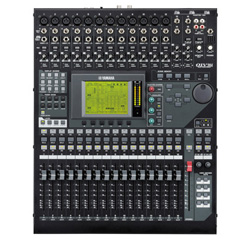In the beginning there was resistance to digital consoles, but the tide has turned and the advantages of digital live sound workflow are so numerous that we now take many for granted.
An obvious advantage is size and weight. Compact digital desks weigh 50 pounds or less, and a 100-meter Cat-5 snake fits in the back of stage box racks. Analog consoles and their associated outboard gear, multi-core snake and splitter take a couple rows in a truck instead of the back seat of a crew cab.
With digital snakes, the hums and buzzes of yesterday are mostly gone, while putting preamps on stage improves sound quality. Gain-sharing means consoles don’t need a splitter, and mix engineers don’t have to listen to their mixes through transformers.
“In-the-box” mixing, where mix processing is performed entirely within a digital console, means engineers can save shows and open them on identical or similar consoles. They can email that file to the next gig, whether across the country or around the world, “cc-ing” a copy as a backup.
Though layered consoles with fixed architecture have been an annoyance to those who grew up with analog, newer designs improve workflow with the ability to “spill” control group members onto fader banks and customization of layers can improve mixing. Remote control of a console from something as inexpensive as an iPad has become a standard feature and a powerful tool, allowing monitor engineers to stand beside performers while front of house engineers check the entire listening area – both with controls in hand.
USB 2.0 has enabled digital console manufacturers to provide multi-track I/O for recording and playback to laptop-based DAWs – and even direct to hard drives in some cases – providing affordable “virtual sound checks” to many applications. This simple innovation allows engineers to easily check a previous show, test sound systems with a previous performance, practice mixing or tweak a show file, teach others to mix, and afterwards, easily mix a show down for distribution using the same console.
Another advent is simple 2-track recording and playback using USB “thumb drives,” allowing engineers to walk away from a console with a board mix they can easily listen to and then e-mail to others if they like. It also provides simple and foolproof playback of walk-in and intro music with no moving parts.
Thirty years ago, 32-input channels was a standard that covered any band and even festivals. Of course, this was before the days of double-miking nearly everything on stage. When I worked at Sun Sound Audio, we took our flagship 32-channel Soundcraft 800 to many New England concerts, colleges, festivals, and even on my first tour with Crystal Gayle.
By 1989 I found myself at the Capital Theater in Port Chester, NY helping Jonny Podell put Duane Allman’s and Dickie Betts’ bands back together (again), with two drum kits and The Band thrown in as an opener, all mixed on that same Soundcraft 800-32. Yes, we used a few Y-cords, but today I’m sure that show would “require” 96 channels. Point being, 32 channels can do a lot, and with today’s digital workflow, so much more.
Yamaha first introduced the “0” series in the ‘90s, and the youngest sibling, the 01V, has long been a benchmark for compact digital consoles. Stan Miller and Bernie Becker took 14 of its predecessor, the Pro Mix 01, on Neil Diamond’s tour as sub-mixers feeding stereo stems into a 24-channel Yamaha PM3500. In honor of this trailblazer, we lead off the listings here with the 01V96i – to this day thousands are used in smaller venues and recording studios.
Take our Real World Gear Photo Gallery Tour of today’s small- and mid-sized digital consoles.
Mark Frink is an independent engineer who has mixed monitors for numerous top artists, and he’s also a consultant, author, and editor.















